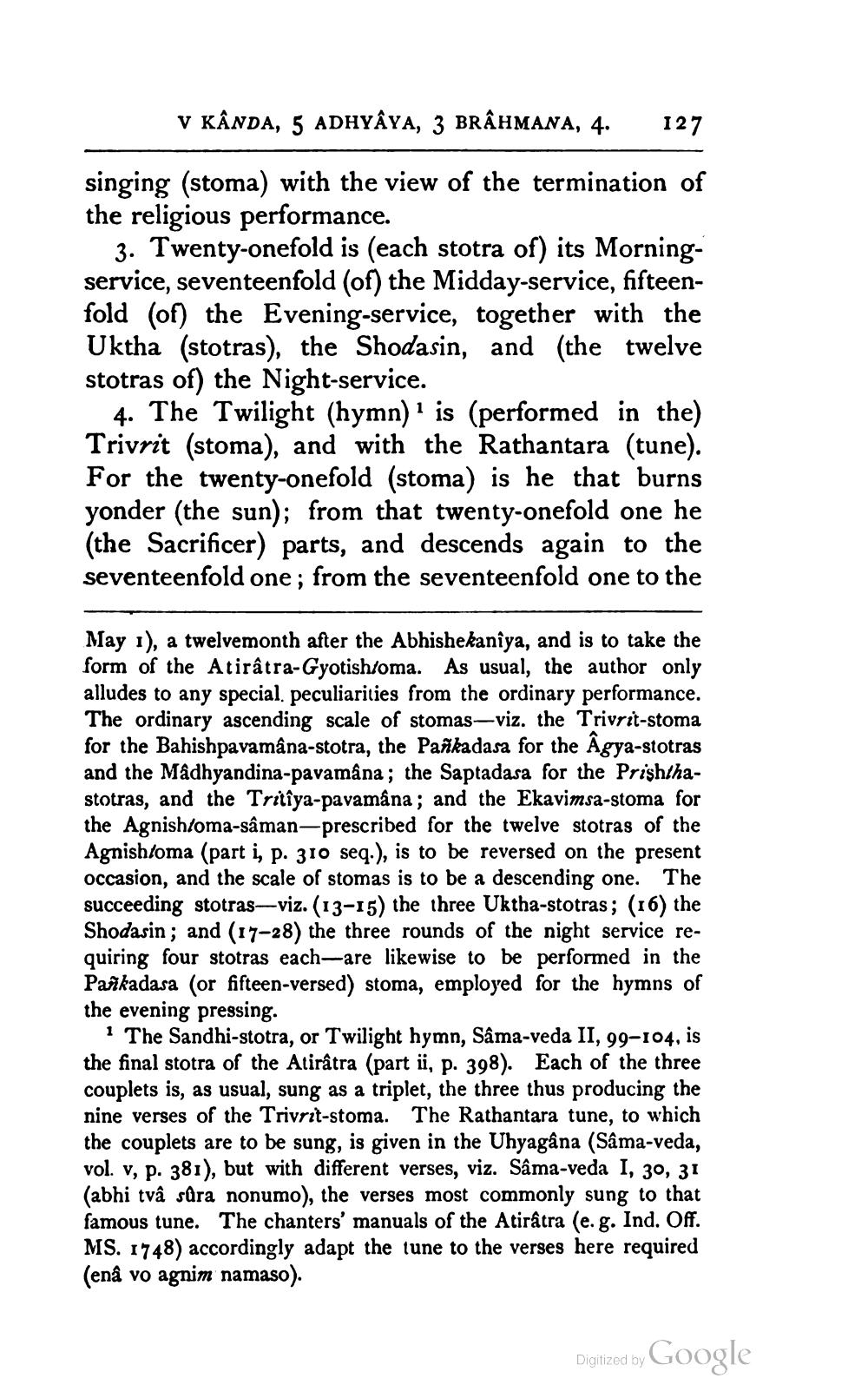________________
V KÂNDA, 5 ADHYÂYA, 3 BRÂHMANA, 4.
127
singing (stoma) with the view of the termination of the religious performance.
3. Twenty-onefold is (each stotra of) its Morningservice, seventeenfold (of) the Midday-service, fifteenfold (of) the Evening-service, together with the Uktha (stotras), the Shodasin, and (the twelve stotras of) the Night-service.
4. The Twilight (hymn) is (performed in the) Trivrit (stoma), and with the Rathantara (tune). For the twenty-onefold (stoma) is he that burns yonder (the sun); from that twenty-onefold one he (the Sacrificer) parts, and descends again to the seventeenfold one; from the seventeenfold one to the
May 1), a twelvemonth after the Abhishekaniya, and is to take the form of the Atirâtra-Gyotishloma. As usual, the author only alludes to any special. peculiarities from the ordinary performance. The ordinary ascending scale of stomas-viz. the Trivrit-stoma for the Bahishpavamâna-stotra, the Pankadasa for the Âgya-stotras and the Mâdhyandina-pavamâna; the Saptadasa for the Prishthastotras, and the Tritîya-pavamâna; and the Ekavimsa-stoma for the Agnishloma-saman-prescribed for the twelve stotras of the Agnishtoma (part i, p. 310 seq.), is to be reversed on the present occasion, and the scale of stomas is to be a descending one. The succeeding stotras-viz. (13-15) the three Uktha-stotras; (16) the Shodasin; and (17–28) the three rounds of the night service requiring four stotras each—are likewise to be performed in the Parkadasa (or fifteen-versed) stoma, employed for the hymns of the evening pressing.
1 The Sandhi-stotra, or Twilight hymn, Sâma-veda II, 99-104, is the final stotra of the Atirâtra (part ü, p. 398). Each of the three couplets is, as usual, sung as a triplet, the three thus producing the nine verses of the Trivrit-stoma. The Rathantara tune, to which the couplets are to be sung, is given in the Uhyagâna (Sâma-veda, vol. v, p. 381), but with different verses, viz. Sâma-veda I, 30, 31 (abhi två sûra nonumo), the verses most commonly sung to that famous tune. The chanters' manuals of the Atirâtra (e. g. Ind. Off. MS. 1748) accordingly adapt the tune to the verses here required (enâ vo agnim namaso).
Digitized by Google




